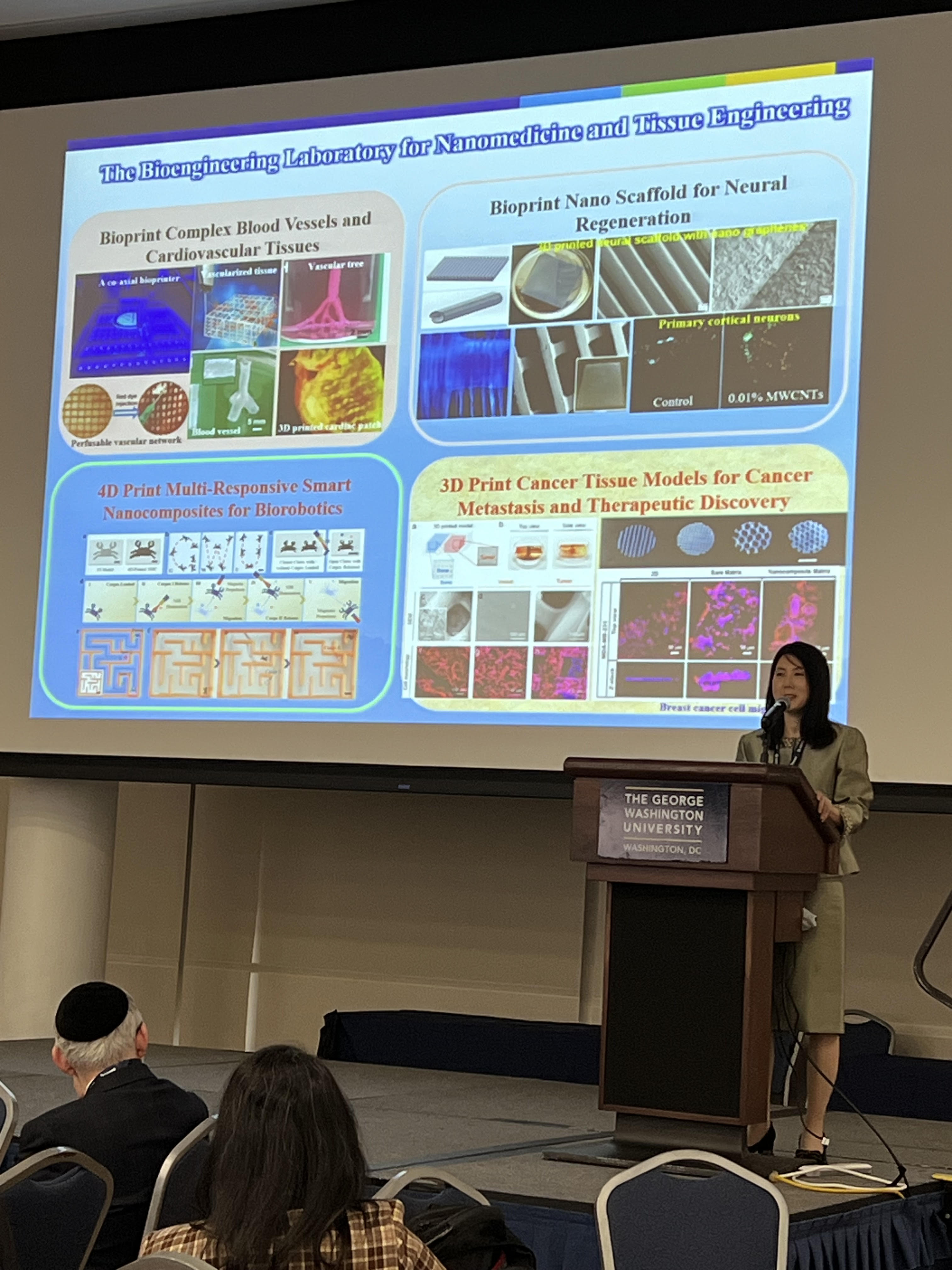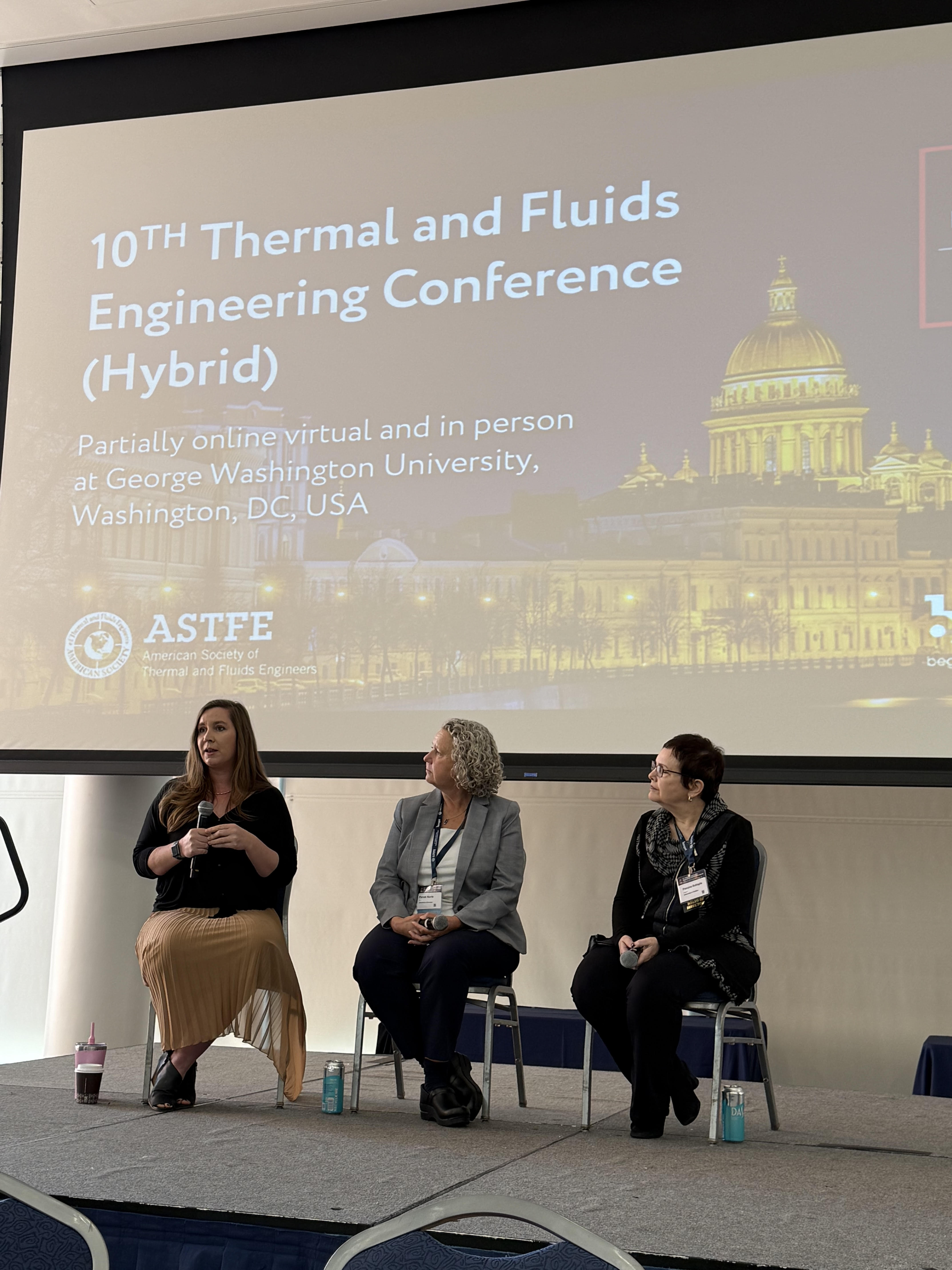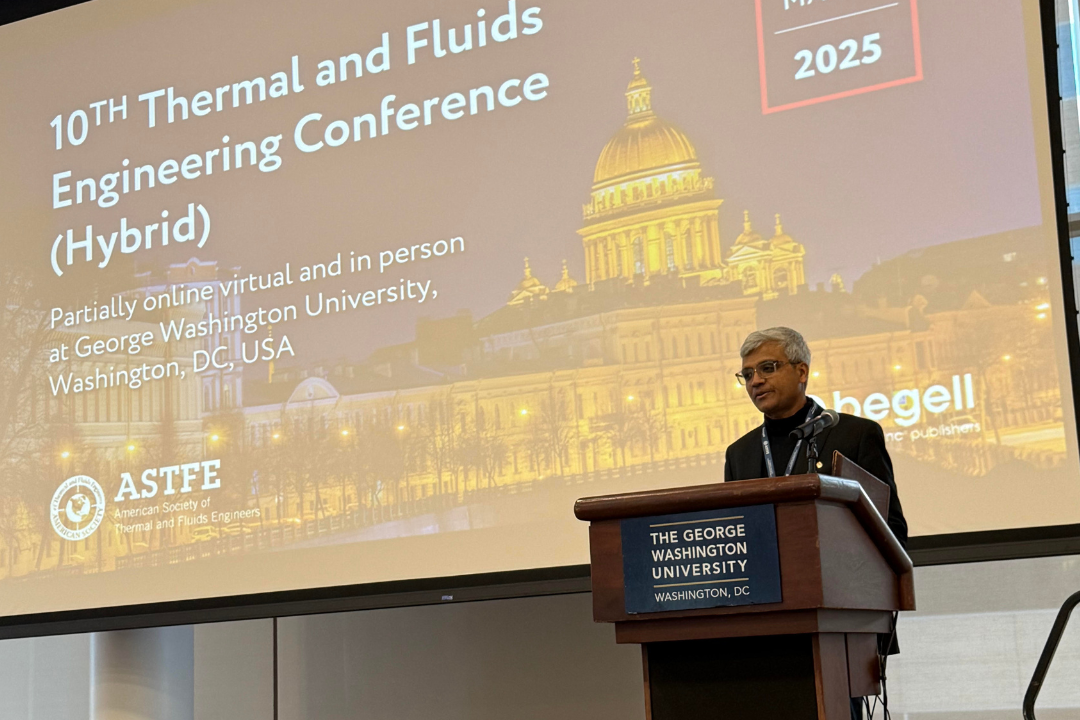GW Engineering’s Department of Mechanical and Aerospace Engineering (MAE) took the lead in hosting the 10th annual Thermal and Fluids Engineering Conference (TFEC), which brought leaders from more than 20 countries across six continents to GW from March 9 to 12. Since 2015, the American Society of Thermal and Fluids Engineers has convened its community at TFEC to discuss the latest advancements in the field.
TFEC 2025 was coordinated by Dr. Pamela Norris, the conference chair and a former GW Engineering faculty member now serving as Dean of Engineering at the University of Delaware, and Dr. Kausik Sarkar, the conference co-chair and an MAE professor at GW Engineering, with the help of a dedicated multi-university team. Through their leadership and the broad engagement of MAE faculty and students, GW Engineering played a central role in the success of this milestone event.
“GW Engineering’s MAE Department has several faculty members whose research and expertise are directly related to fluids and thermal sciences. It made GW an ideal candidate for hosting the annual meeting,” Sarkar stated.

In its hybrid format, TFEC 2025 drew 230 participants in person to GW’s Marvin Center and 70 virtually. Sarkar oversaw the in-person planning and logistics and secured funding from the National Science Foundation and the Office of Naval Research to ensure all necessary arrangements were in place.
Through its comprehensive technical program, the conference spotlighted foundational research and emerging innovations presented by experts across industry and academia. For instance, Dr. Ravi Parasar, Chief Technology Officer of Bloom Energy, discussed the core scientific and economic challenges of alternative energy.
Representing GW Engineering in the Technology, Entrepreneurship, and Communication Talk series, Drs. Lijie Grace Zhang and Michael Keider shared their work on 4D bioprinting and cold plasma technology, respectively.

GW Engineering’s thought leadership was reflected in two panel discussions, where MAE faculty led conversations on bolstering the field through innovative workforce development and educational practices. Dr. Saniya LeBlanc shared her techniques for navigating challenges and opportunities in thermal fluids education, while Dr. Megan Leftwich joined Norris in a panel discussing how to recruit and retain researchers who bring unique ideas and perspectives.
Six MAE students also contributed to the conference by presenting technical papers. Advised by Sarkar and LeBlanc, these students shared research findings on topics ranging from microbubbles for medical applications to the behavior of viscous drops in complex media. The conference’s broad participation gave them an excellent opportunity to interact with peers and experts alike.
“The conference allowed students from GW and other institutions to interact with and learn from the stalwarts of the fields and each other. It enabled them to gauge their own research activities and collaborate with others,” said Sarkar.
By coordinating and participating in this international forum, GW Engineering’s MAE Department not only fostered valuable connections within the global thermal and fluid sciences community but also reinforced its leadership in the field.


